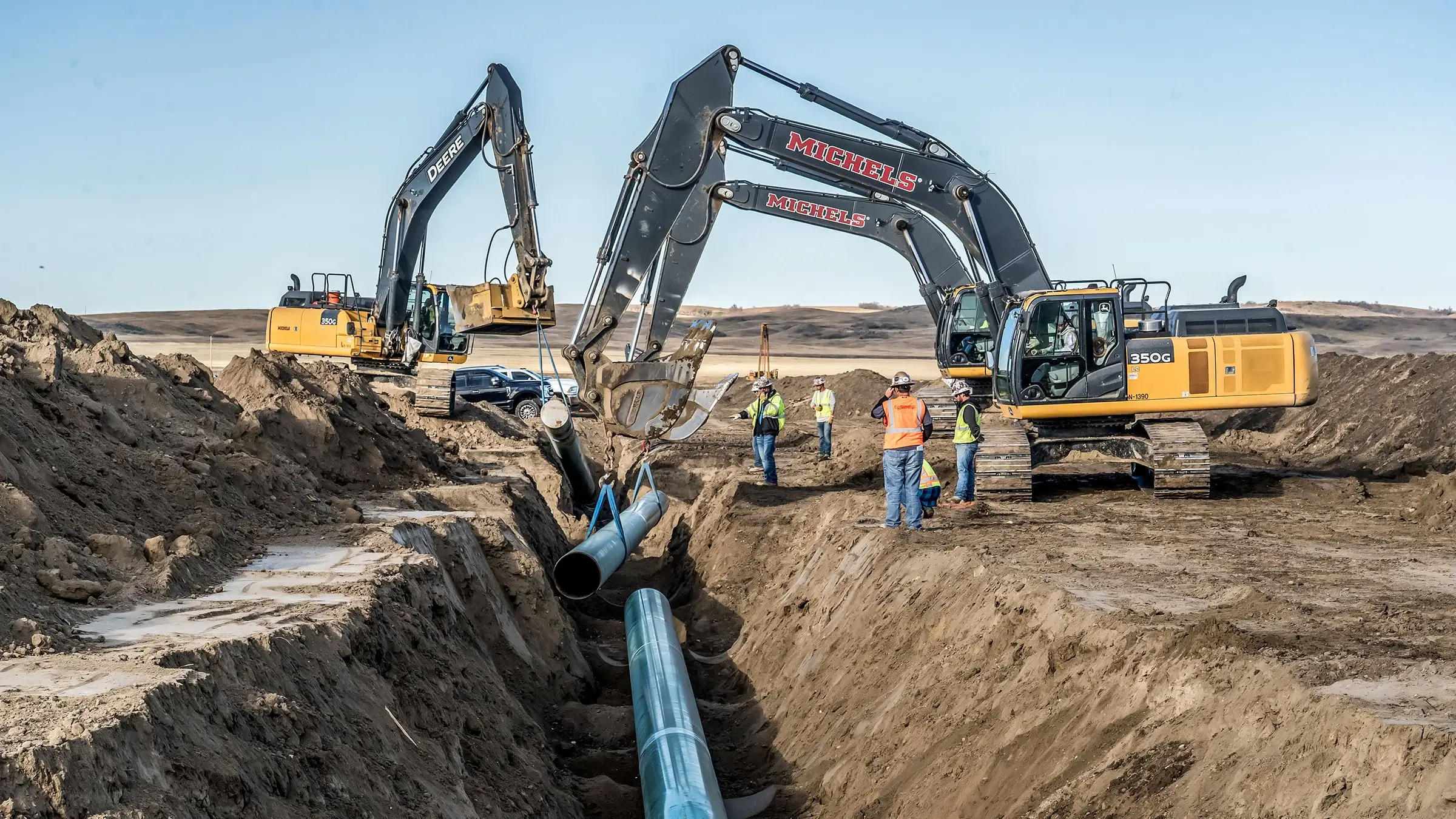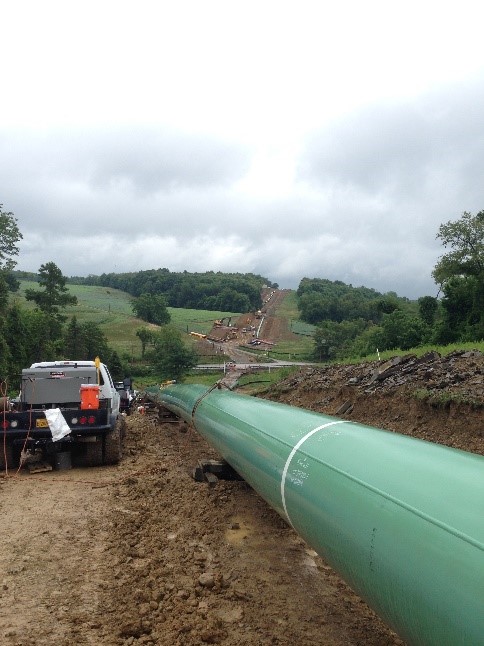Complete Walkthrough to Successful Creek Pipe pipeline construction
The Significance of Pipeline Construction: Exploring the Solutions Provided in the Industry
Pipeline construction is a vital part of modern infrastructure. It helps with the transport of necessary sources like oil, gas, and water. The industry encompasses various solutions, including preparation, site preparation, and installment. Each phase needs accuracy and adherence to security criteria. As neighborhoods depend upon these systems for their resources, recognizing the ins and outs of pipeline construction reveals its relevance and potential difficulties. What elements influence the success of these projects?
Overview of Pipeline Construction Services
Pipeline construction solutions incorporate a variety of specific activities made to promote the setup of pipelines for transferring various materials, consisting of oil, gas, and water. These services usually consist of site preparation, excavation, setup of pipeline sectors, and backfilling. Competent labor and innovative devices are basic for assuring each stage is executed with precision and safety.Safety procedures are vital, as these tasks commonly entail dealing with unsafe products and in challenging settings. Quality assurance procedures ascertain that the pipes fulfill industry requirements and laws. In addition, the solutions may entail trenchless modern technology, which lessens surface area disruption.Environmental considerations play a significant role in pipe construction, calling for assessments and mitigations to safeguard bordering communities. Overall, pipeline construction services are necessary for developing the facilities necessary for power and water distribution, sustaining both financial growth and social requirements.
Planning and Layout in Pipeline Projects
Reliable preparation and style are vital elements of effective pipeline tasks, ensuring that all elements are carefully attended to prior to construction starts. This stage entails comprehensive usefulness researches that analyze the technological, financial, and ecological variables affecting the job. Engineers and designers work together to create detailed plans that outline the pipe route, materials, and construction techniques, aligning with governing requirements and market standards.Advanced software program and modeling strategies are frequently utilized to mimic different scenarios, optimizing the design for efficiency and safety. Ecological influence evaluations are performed to minimize prospective injury to communities and areas, reflecting a dedication to sustainable techniques. Additionally, stakeholder engagement is vital, cultivating communication and dealing with problems from impacted celebrations. Ultimately, reliable preparation and style established the structure for a pipe job, lessening dangers and making certain a structured construction process, eventually adding to the total success of the procedure.
Site Preparation and Excavation
Complete site preparation and excavation are necessary steps in the pipeline construction procedure. This phase includes a thorough assessment of the land where the pipeline will be set up. Task groups perform surveys to recognize dirt types, topography, and existing utility lines to guarantee a risk-free and effective excavation. Correct site preparation reduces environmental impact and assists in smoother construction operations.Excavation complies with, where heavy machinery is used to eliminate soil and rock, developing a trench that satisfies the specified depth and size for the pipe. This process needs to stick to safety and security policies and ecological standards to protect against damages to surrounding ecosystems.Additionally, erosion control actions are implemented to maintain the site throughout and after excavation. Efficient site preparation and excavation contribute considerably to the total success of pipeline jobs, laying a solid structure for the subsequent stages of construction.
Pipeline Installation Strategies
Pipeline installation techniques are vital for the successful application of infrastructure jobs. Two prominent methods consist of trenchless technology, which minimizes surface area interruption, and the open-cut excavation procedure, known for its simple technique. Each technique supplies distinctive benefits and considerations depending on task demands and ecological aspects.
Trenchless Innovation Methods
While traditional approaches of pipeline installation usually include substantial excavation, trenchless innovation approaches provide an extra efficient and eco friendly alternative. These ingenious methods, such as horizontal directional drilling and pipeline bursting, lessen surface disturbance by permitting the installment of pipelines without considerable digging. This not just lowers the environmental effect but additionally considerably minimizes labor and remediation expenses. Trenchless approaches facilitate the setup of pipes in metropolitan areas where standard excavation would be unwise or destructive to existing facilities. Furthermore, these strategies can accommodate different soil kinds and problems, making them functional solutions for pipe construction. Ultimately, trenchless modern technology stands for a significant innovation in the pipe market, advertising sustainability and operational effectiveness.

Open-Cut Excavation Refine
Open-cut excavation stays a fundamental method in pipeline installment, defined by the direct excavation of a trench to lay pipes. This method includes eliminating dirt and other products to create a trench of sufficient deepness and size, permitting the positioning of pipes at the called for grade. Open-cut excavation is frequently liked for its cost-effectiveness and simpleness, specifically in locations with secure soil conditions. It can interrupt surface tasks and needs cautious preparation to handle web traffic and ecological effects. Security steps should be carried out to shield workers and close-by facilities during the excavation procedure. On the whole, while open-cut excavation may not appropriate for all surfaces, it continues to be a commonly made use of method in pipe construction.
Testing and Top Quality Assurance
Testing and quality control are critical parts in pipe construction, ensuring that installments fulfill well-known safety requirements and performance requirements. Various assessment strategies and techniques are utilized to analyze material high quality and adherence to regulative conformity. This systematic method assists recognize prospective issues before they intensify, securing the stability of the pipe system.

Assessment Techniques and Methods
Evaluation techniques and approaches are crucial components in making sure the stability and security of pipeline construction. Different strategies, including aesthetic evaluations, ultrasonic testing, and radiographic evaluations, are used to identify issues and verify high quality. Aesthetic assessments permit the identification of surface area abnormalities, while ultrasonic testing makes use of audio waves to assess wall surface thickness and locate flaws inside. Radiographic assessments entail X-rays or gamma rays to generate photos of hop over to these guys the pipeline's structure, revealing concealed concerns. Furthermore, pressure screening is carried out to assess the pipeline's stability under operational conditions. These approaches collectively contribute to an extensive understanding of the pipe's condition, enabling prompt upkeep decisions and ensuring conformity with industry requirements. Reliable evaluation is important for preventing failings and promoting lasting operational safety.
Safety And Security Requirements Compliance
Guaranteeing conformity with security requirements is vital in pipeline construction, as it straight affects the task's general high quality and reliability. Sticking to well established regulations and standards assurances that construction practices reduce threats related to pipeline installment and operation. Creek Pipe Texas oilfield. Strenuous screening protocols, consisting of non-destructive screening and pressure assessments, are vital in confirming that pipes can stand up to the operational tensions they will encounter. Quality guarantee procedures are also essential, as they develop a structure for constant tracking and analysis throughout the construction process. By prioritizing safety and security standards conformity, companies not just shield employees and the environment but additionally enhance the honesty of the pipe, eventually causing long-term operational success and public count on in the facilities
Material Quality Analysis
Material quality evaluation plays a substantial function in the general stability of pipeline construction. This procedure entails strenuous screening and high quality assurance steps to ensure that materials fulfill industry criteria and specifications. Various examinations, consisting of tensile strength, corrosion resistance, and weld stability analyses, are performed to determine any prospective weak points. A comprehensive analysis not just guarantees the efficiency of the pipeline yet likewise enhances safety and security and toughness over its life-span. Furthermore, carrying out quality assurance methods assists minimize dangers connected with material failures, which can cause expensive repairs and environmental hazards. By focusing on worldly quality analysis, firms can guarantee compliance with governing demands while promoting confidence among stakeholders in the dependability of their pipeline systems.
Maintenance and Repair Service Services
Repair and maintenance solutions play a vital role in the durability and performance of pipeline systems. These services incorporate routine evaluations, troubleshooting, and rehabilitative activities to resolve deterioration, leakages, and various other concerns that might occur gradually. Knowledgeable service technicians use sophisticated innovations such as ultrasonic screening and clever pigging to monitor pipe honesty, making sure that any possible troubles are recognized early.Additionally, maintenance programs often include arranged preventative steps designed to enhance system integrity and reduce the possibility of unforeseen failings. Repair services might involve the replacement of broken sections, securing More Info leakages, or using trenchless technology for minimal interruption.
Environmental Compliance and Precaution
Pipeline systems not only need recurring repair and maintenance to function effectively however also need to comply with rigorous environmental conformity and security steps. These policies are vital for minimizing environmental impact and ensuring public security. Firms in the pipeline construction sector carry out extensive environmental analyses prior to project initiation, recognizing possible dangers to wild animals and ecosystems.Furthermore, adherence to safety and security protocols protects employees and bordering neighborhoods. This consists of routine training on emergency reaction and spill prevention techniques.To preserve compliance, sectors use keeping an eye on modern technologies to identify leakages and other anomalies in real-time. Ecological administration plans are usually established to outline actions for dealing with unanticipated concerns during construction.Ultimately, stringent adherence to environmental compliance and precaution not only meets legal obligations yet also promotes lasting practices within the market, promoting an equilibrium between infrastructure advancement and ecological stewardship.
Regularly Asked Concerns
What Job Opportunities Are Readily Available in Pipeline Construction?
Career possibilities in pipe construction encompass functions such as task supervisors, designers, welders, and security examiners. These placements call for diverse abilities, offering pathways for development in a crucial industry of framework development and energy distribution.

How Do Pipeline Projects Influence Citizen Communities?
Pipeline tasks considerably impact regional areas by influencing economic development, giving job possibilities, and enhancing framework. They may additionally elevate worries concerning ecological results, land usage, and potential disturbances to community cohesion and all-natural ecosystems.
What Technology Is Utilized in Modern Pipeline Construction?
Modern pipe construction utilizes sophisticated modern technologies such as GIS for mapping, drones for aerial surveys, and automated welding systems to boost efficiency, safety and security, and accuracy, ultimately assisting in the efficient transportation of resources throughout numerous terrains. Creek Pipe roustabout.
Just How Are Pipeline Construction Expenses Estimated?
Pipeline construction prices are estimated Homepage with in-depth assessments of products, labor, tools, and regulative needs. Elements like terrain, project size, and environmental factors to consider likewise substantially affect the general budget and economic planning for construction.
What Are the Greatest Difficulties in Pipeline Construction Projects?
The largest difficulties in pipeline construction tasks include governing compliance, environmental concerns, logistical concerns, protecting financing, and managing labor scarcities. Each factor can significantly influence timelines and budgets, complicating the total execution of the project.